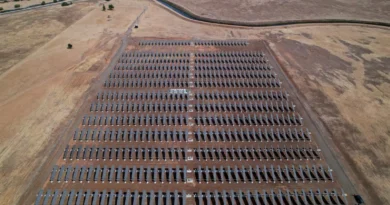New ‘Miracle Material’ Shatters Solar Panel World Record
Scientists have achieved a significant milestone in solar panel efficiency using what is dubbed a “miracle material.” A team from the Chinese solar technology company Longi has set a new world record, reaching an efficiency of 33.9 percent for a silicon-perovskite tandem solar cell. This surpasses the previous record set by King Abdullah University of Science & Technology (KAUST) in Saudi Arabia earlier this year.
Notably, this breakthrough also exceeded the theoretical limit of 33.7 percent for standard single junction cells, commonly found in commercial solar panel. Longi emphasized the meaningful empirical evidence showcasing the superiority of crystalline silicon-perovskite tandem solar cells over crystalline silicon single junction solar cells in terms of efficiency.
The emergence of this technology signifies a new pathway for developing high-efficiency solar cell technology. This innovation means that a given area, while absorbing the same amount of light, can produce more electricity. The theoretical efficiency limit of silicon-perovskite tandem solar cells is 43 percent, although achieving this level on a commercial scale remains unlikely.
In China, the initial production of highly efficient perovskite solar panels might soon commence, thanks to a design breakthrough announced earlier in the year by researchers from Nanjing University. They suggest that the next-generation panels could be 50 percent cheaper and 50 percent more efficient than traditional silicon cells. However, reaching these efficiency rates in practical applications is still a considerable distance away from current lab achievements.
Oxford PV, a UK startup originating from the University of Oxford, is actively moving towards commercializing this technology. They aim to start full-scale production at a German facility in the near future. Chris Case, the Chief Technology Officer of Oxford PV, underlined the potential of perovskite to significantly enhance the efficiency of solar cells, emphasizing the challenges primarily lie in ensuring durability and reliability.
Perovskite has been lauded as a material with the potential to revolutionize various industries, not only by increasing efficiency in solar panels compared to traditional silicon cells but also by introducing new ways to utilize them. Recent advancements include self-healing solar panels capable of maintaining efficiency for extended periods, along with double-sided panels generating electricity from both sides, harnessing the Sun’s energy.
The scope of perovskite extends beyond solar energy applications. It has potential uses in building-integrated solar panels and space-based electricity generation, making it a versatile material with broad-reaching implications in renewable energy and technology sectors.
Source – https://www.independent.co.uk/




